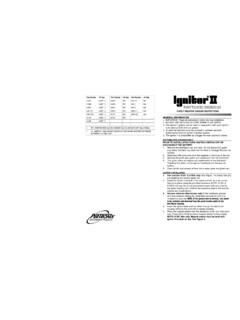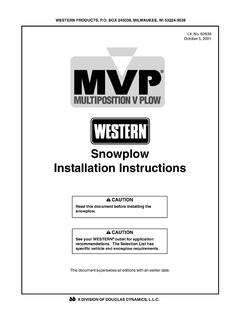Transcription of Surfacing guide for path projects
1 Clyde Walkway, Blantyre Surfacing guide for path projects 2 PATHS FOR ALL PATHS FOR ALL 2 Paths for All 2019 Supported by: 3 PATHS FOR ALL PATHS FOR ALL 3 Contents Using this guide .. 4 Unbound surfaces .. 5 Whin dust / Granite dust .. 5 As dug .. 8 Semi-bound surfaces .. 11 Ultitrec .. 11 Cedec .. 14 Firechip .. 16 Bound surfaces .. 19 Tarmac .. 19 Hot rolled asphalt (HRA) .. 22 Porous asphalt .. 24 Coloured asphalt .. 26 Resin bound grit .. 27 Bitumen bound tar spray & chip.
2 29 Fibredec .. 31 KBI Flexi -Pave .. 33 Smart Surface .. 35 Other path surfaces .. 39 Reinforced grass .. 39 Glossary of terms .. 42 A cross section of a new path .. 45 Acknowledgements .. 46 Site clearance Using this guide 4 PATHS FOR ALL PATHS FOR ALL 4 We have created this guide to help you choose the most effective and appropriate Surfacing material for your path project . It provides details on a range of path Surfacing options available within Scotland, many of which can be viewed at the Paths for All National path Demonstration Site within SRUC Oatridge Campus, and is intended as a guide to aid decision making and specifying of path installations or upgrades to suit most shared use path requirements and budgets.
3 It should not be regarded as an exhaustive listing. Regional and/or supplier variations of material and colour will be available. These should be investigated, where appropriate, noting that locally sourced materials and suppliers will assist in keeping haulage impact and costs to a minimum. Any noted links to material suppliers, products and additional technical resources were correct at the time of issue. installation costs listed within this guide are intended to be indicative only and have mostly been taken from Paths for All Estimating Price guide for path projects . Any estimated costings have typically assumed a new build, full tray excavation and construction, unless otherwise noted.
4 All prices are estimated at the time of issue and are based on the cost of a competent contractor supplying the materials and carrying out the work. VAT is not included in the prices and no allowance been made for contingency. It is generally recommended that a minimum contingency allowance of 5% is included within your estimations. For further information on the design and construction of paths, including more detailed specifications and standard detailed drawings, please visit Paths for All, Technical Advice & Support. For additional help in using this guide , please get in touch at Tel: 01259 218888 Email: 5 PATHS FOR ALL PATHS FOR ALL 5 Site clearance Unbound surfaces Whin Dust/ Granite Dust General description Unbound surfaces rely on friction between small aggregate particles (typically graded down from 6mm in size) to help them bind together.
5 They are susceptible to damage from moving water and a suitable crossfall or camber (recommended max 1:40) is essential to help shed water off the surface and into adjacent ground or other drainage feature. Similarly, any path with an unbound wearing course should not exceed linear gradients of 1:8 (equivalent to or 7 ). Anything steeper could result in the material being rapidly washed off the surface, exposing the base material to erosion. Suitability Paths with a dust wearing course are a familiar sight in many rural and semi-urban settings and can be an excellent choice of Surfacing where a compromise between durability and value for money is required.
6 When constructed to a high standard, and in the correct situation, an unbound whin or granite dust path will provide a smooth and firm surface that is suitable for all user groups. Care is needed to ensure that the correct depth of dust is applied during construction and/or any ongoing maintenance. Too thick and the path surface is likely to be soft when wet; too little and the larger angular base aggregate will be kicked up and lie loose on the surface making it potentially unsuitable for some path users, including horses and wheelchair users. In addition, there will be a need for higher levels of ongoing maintenance than other more expensive semi-bound / self-binding or bound materials however its ease of application makes it ideally suited to any ongoing maintenance by unskilled labour local path volunteers.
7 6 PATHS FOR ALL PATHS FOR ALL 6 Site clearance Unbound surfaces Benefits When properly laid, it can form a smooth and semi-durable surface on level ground, or gentle to moderate path gradients less than 1:8, that can be used by all path users, including horses a lower cost surface to install than a semi-bound / self-binding material Ultitrec and significantly less costly than a fully bound material bitmac or asphalt a natural looking, visually familiar and semi-formal surface that blends in well with most landscape settings doesn t require skilled operatives or specialist machinery. Suitable for volunteers to apply and maintain typical lifespan of 5-10 years Limitations surface can be liable to water scouring if water cannot get off the path or is shed too quickly off the path .
8 Good path design with reduced gradients, recommended crossfalls or camber and adequate drainage is essential to enhance durability not durable on steeper gradients (max. 1:8 / / 7 ) can be susceptible to frost heave. When first laid, any insufficient compaction of the surface material may allow it to hold water that can freeze then thaw thereby loosening the surface, making it soft underfoot and more liable to be washed off by surface water erosion. Thorough compaction of the finished surface can significantly reduce likelihood of damage from frost heave this type of Surfacing is more susceptible to general wear and tear regular inspection and maintenance is required; particularly if the level of use is high, the path is within a woodland setting (very susceptible to washout from water dripping off trees) or where there are steeper gradients along the path route granite dust is quarried at a limited number of places across Scotland meaning haulage costs can be prohibitive.
9 It is typically only used where local quarries are not producing the more widely available limestone/whin dust 7 PATHS FOR ALL PATHS FOR ALL 7 Site clearance Unbound surfaces Cost - 25/m2 Technical resources Whin Dust path Paths for All Standard Detail Drawing & Specification Details Whin Dust path Forestry Commission Scotland Standard Detail Drawing Granite Dust path Paths for All Standard Detail Drawing & Specification Details Aggregates for path Construction: Sustrans Technical Information Note No. 7 Images Granite Dust (Pink) Whin Dust Whin Dust path 8 PATHS FOR ALL PATHS FOR ALL 8 Site clearance Unbound surfaces As dug General description A locally won Surfacing material, ideally consisting of free draining, naturally occurring sands and rounded gravels with relatively high fines and clay content which helps to stick the sand and gravel particles together when thoroughly compacted with a roller.
10 It is commonly sourced from on-site borrow pits or imported to the site from a nearby source. As dug will often bind well after compaction and can form a reasonably firm and smooth surface, however it can vary in composition along the path route and its quality and consistency should be carefully monitored when used. Suitability As dug materials can create a semi-formal, single layer path base and surface with a natural appearance that has a good landscape fit whilst also meeting user needs. Care is needed to ensure that any locally available material is sufficiently granular in nature with excellent free-draining, binding and compaction properties.








